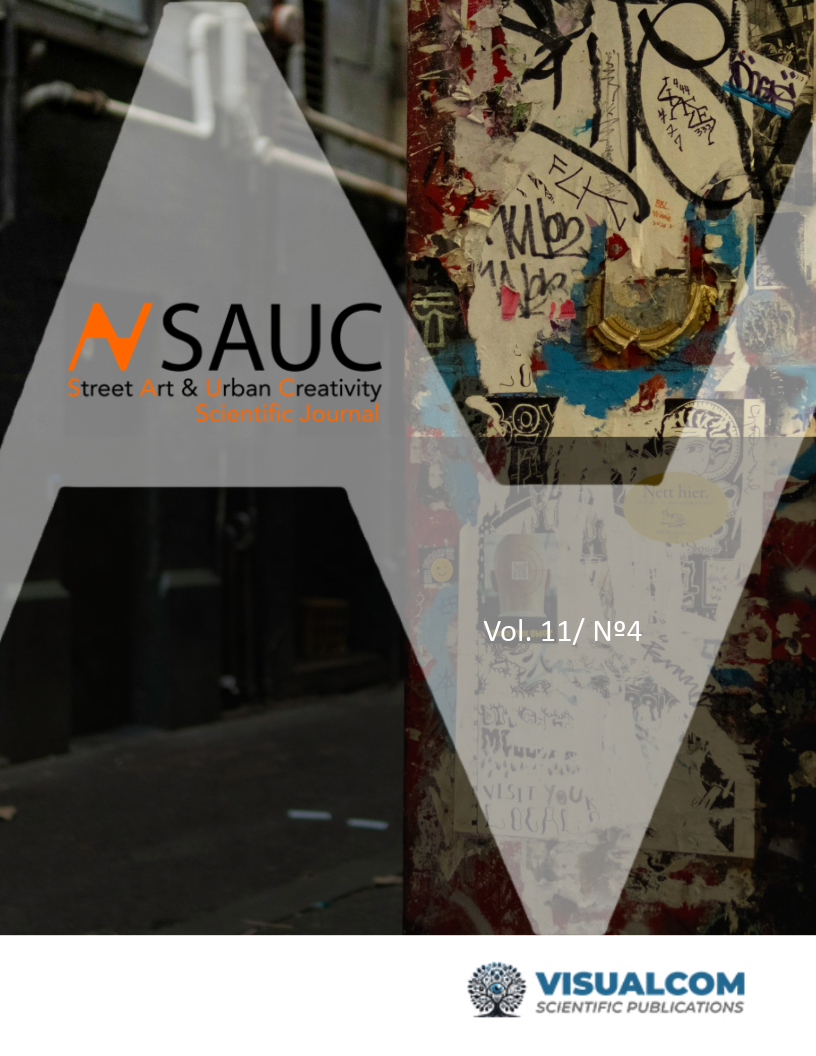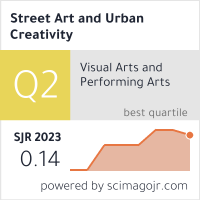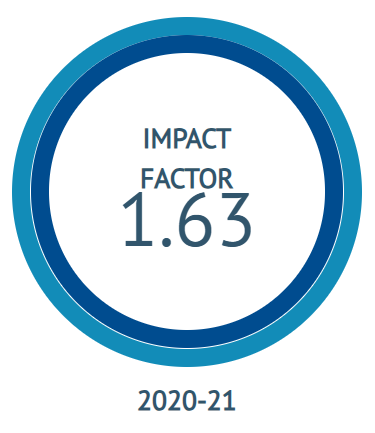Sustainability of Film Commissions
Analysis of environmental, social, and economic measures for sustainable audio-visual production
DOI:
https://doi.org/10.62161/sauc.v11.5726Keywords:
Sustainability, Green Shooting, Sustainable Development Goals (SDG), Film Commissions, Film Production, Audiovisual Industry, TourismAbstract
Film commissions integrate sustainability guidelines into film and television production. As organisations that manage locations and link the audiovisual industry with tourism and cultural heritage, film commissions provide the audiovisual industry with various tools and services to produce works that meet audiovisual sustainability in its triple dimension: environmental, social and economic. This study analyses the objectives, indicators, initiatives and resources of the Spanish film commissions regarding sustainability. These actions include guidelines and recommendations, catalogues of good practises, carbon footprint calculators, training actions, communication and dissemination work and training for different professionals in the audiovisual sector. The main findings and conclusions confirm that despite the progressive integration of sustainability measures in film and television production, further progress is needed in terms of legislation, standardisation of sustainability criteria, financial support for sustainable productions and, above all, the transfer of knowledge and skills for the professionals of the future.
Downloads
Global Statistics ℹ️
|
417
Views
|
394
Downloads
|
|
811
Total
|
|
References
Akehurst, G., Afonso, C., & Gonçalves, H. (2012). Re-examining Green Purchase Behaviour and the Green Consumer Profile: New Evidence. Management Decision, 50(5), 972–988. https://doi.org/10.1108/00251741211227726
Albert, BFI, & Arup (2020). A Screen New Deal. A Route Map to Sustainable Film Production. https://www.arup.com/insights/a-screen-new-deal-a-route-map-to-sustainable-film-production/
Albert Gómez, M. J. (2006). La investigación educativa. Claves teóricas. McGraw-Hill.
Álvarez-Monzoncillo, J. M. (2024). La competitividad del ecosistema audiovisual español. McGraw-Hill.
BAFTA (2023). Albert Annual Review. https://wearealbert.org/2024/08/06/bafta-albert-releases-2023-annual-review
Beeton, S. (2001). Smiling for the Camera: the Influence of Film Audiences on a Budget Tourism Destination. Tourism, Culture and Communication, 3(1), 15–25. https://doi.org/10.3727/109830401108750661
Beeton, S. (2005). Film-Induced Tourism. Channel View Publications.
Bhattacharyya, J., Dash, M. J., Hewege, C., Makam, S. B., & Lim, W. M. (2021). Social and Sustainability Marketing: A casebook for reaching your socially responsible consumers through marketing science. Routledge.
Camacho-Otero, J., Boks, C., & Pettersen, I. N. (2018). Consumption in the Circular Economy: A Literature Review. Sustainability, 10(8), 2758. https://doi.org/10.3390/su10082758
Corvellec, H., Stowell, A. F., & Johansson, N. (2022). Critiques of the Circular Economy. Journal of Industrial Ecology, 26(2), 421–432. https://doi.org/10.1111/jiec.13187
Croy, W. G. (2010). Planning for Film Tourism: Active Destination Image Management. Tourism and Hospitality Planning & Development, 7(1), 21–30. https://doi.org/10.1080/14790530903522598
Dickinson, M., & Harvey, S. (2005). Film Policy in the United Kingdom: New Labour at the Movies. The Political Quarterly, 76(3), 420–429. http://doi.org/10.1111/j.1467-923X.2005.00701.x.
European Audiovisual Observatory (2024). Yearbook 2023/2024 - Key trends. https://www.obs.coe.int/en/web/observatoire/publications
European Commission (2022). The EU blue economy report 2022. Publications Office of the European Union. https://data.europa.eu/doi/10.2771/793264
European Film Commissions Network (2025). Green Filming. EUFCN engagement in sustainable filming. https://eufcn.com/green-filming/
Evans, C., Julian, I., & Simon, F. (2020). The Sustainable Future of Video Entertainment from Creation to Consumption. Futuresource Consulting.
Green Screen Interreg Europe (2020). Greening the creative industries: improving policy practices for the European Audiovisual industry. https://projects2014-2020.interregeurope.eu/greenscreen/
KEA-European Commission (2019). Impulse paper on the role of cultural and creative sectors in innovating European industry. https://doi.org/10.2873/509380
Heitmann, S. (2010). Film Tourism Planning and Development—Questioning the Role of Stakeholders and Sustainability. Tourism and Hospitality Planning & Development, 7(1), 31–46. https://doi.org/10.1080/14790530903522606
Huerta-Viso, P. J., Llorca Abad, G., & Canós-Darós, L. (2024). Film-Induced Tourism, Destination Branding and Game of Thrones: A Review of the Peñíscola de Cine Project. Sustainability, 16(1), 186. https://doi.org/10.3390/su16010186
Lopera-Mármol, M., & Jiménez-Morales, M. (2021). Green Shooting: Media Sustainability, A New Trend. Sustainability, 13(6), 3001. https://doi.org/10.3390/su13063001
Lubowiecki-Vikuk, A., Dąbrowska, A., & Machnik, A. (2021). Responsible Consumer and Life-Style: Sustainability insights. Sustainable Production and Consumption, 25(1), 91–101. https://doi.org/10.1016/j.spc.2020.08.007
Márquez-Ballesteros, M. J., García-Moreno, A. E., & Boned Purkiss, J. (2021). Investigaciones audiovisuales para una ciudad creativa y sostenible. En J. Sierra & J. Gomes (eds.), Audiovisual e Industrias Criativas. Presente e Futuro. McGraw Hill, 649–664. https://hdl.handle.net/10630/25899
Martínez Puche, A., & Martínez Puche, S. (2010). El cine como soporte de promoción turística del territorio en un contexto globalizado. Siranda, 1(3), 157–173.
Osácar, E. (2022). Las iniciativas de turismo cinematográfico vinculadas al CETT. En J. Nieto-Ferrando, A. del Rey Reguillo & E. Martín Fuentes (Coord). Turismo inducido por el audiovisual. Comunicación Social Ediciones y Publicaciones, 111–131. https://doi.org/10.52495/c4.emcs.6.p88
Paz Gil, I., Prado Román, A., & Prado Román, M. (2024). Sostenibilidad organizacional. Pirámide.
Roger-Monzó, V. (2022). Audiovisual Industry in Spain: Analysis of Sustainability Transitions. VISUAL REVIEW. International Visual Culture Review, 12(4), 1–13. https://doi.org/10.37467/revvisual.v9.3768
Sustainable Production Alliance (2021). Carbon Emissions of Film and Television Production. https://greenproductionguide.com/in-action/#pg-2660-6
United Nations (2025). Sustainable Development Goals.
Victory, J. (2015). Green Shoots: Environmental Sustainability and Contemporary Film Production. Studies in Arts and Humanities, 1(1), 54–68. https://doi.org/10.18193/sah.v1i1.6
Wimmer, R. D., & Dominick, J. R. (1996). La investigación científica de los medios de comunicación, una introducción a sus métodos. Bosch.
Yin, R. (1994). Case Study Research: Design and Methods. Sage Publications.
Downloads
Published
How to Cite
Issue
Section
License
Copyright (c) 2025 Authors retain copyright and transfer to the journal the right of first publication and publishing rights

This work is licensed under a Creative Commons Attribution-NoDerivatives 4.0 International License.
Those authors who publish in this journal accept the following terms:
-
Authors retain copyright.
-
Authors transfer to the journal the right of first publication. The journal also owns the publishing rights.
-
All published contents are governed by an Attribution-NoDerivatives 4.0 International License.
Access the informative version and legal text of the license. By virtue of this, third parties are allowed to use what is published as long as they mention the authorship of the work and the first publication in this journal. If you transform the material, you may not distribute the modified work. -
Authors may make other independent and additional contractual arrangements for non-exclusive distribution of the version of the article published in this journal (e.g., inclusion in an institutional repository or publication in a book) as long as they clearly indicate that the work was first published in this journal.
- Authors are allowed and recommended to publish their work on the Internet (for example on institutional and personal websites), following the publication of, and referencing the journal, as this could lead to constructive exchanges and a more extensive and quick circulation of published works (see The Effect of Open Access).













